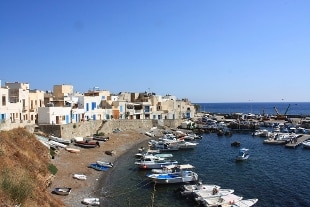Share
09 August 2021 A wreck was found at a depth of 98 meters in the sea of the Egadi. The ship, from the 4th-5th century AD, has an intact load of amphorae of the Almargo 51c type from the Iberian peninsula. The discovery is the result of the research campaign in progress in the stretch of water of the Egadi Islands, coordinated by the Superintendence of the Sea of the Sicilian Region in collaboration with the Rpm Nautical Foundation, a non-profit organization of archaeological research and education that from 2005 supports the maritime archaeological research of the Sicilian Region and the University of Malta. The discovery is the result of two research campaigns carried out in November 2020 and July this year, with a side scan sonar aboard the Hercules,which provided important targets on which research has resumed in recent days.
The numerous surveys (swipes), carried out with advanced robotics tools such as the Auv (autonomous underwater vehicle) and the Rov (remotely operated vehicles), allowed to delineate in detail the wreck with its load of amphorae whose return in 3D it will be built in 2022 by SopMare and the University of Malta, thanks to Professor Timmy Gambin and RPM in a measurement campaign. "This discovery is the umpteenth demonstration of an incessant work that continues on our seabed - highlights the Regional Councilor for Cultural Heritage and Sicilian Identity, Alberto Samona '- to discover new submerged archaeological sites and reconstruct the events of antiquity. L'the increasingly frequent use of new technologies in the field of underwater research is delivering satisfactory results by opening the Mediterranean to a broader and more detailed reading. The discovery of a new wreck at high depth, after that of the Roman ship identified a few days ago at Isola delle Femmine, confirms the importance of intensifying international collaborations. Sicily, in fact, is a precious treasure chest whose value is to enrich the narration of movements in the Mediterranean with details in a time when Sicily was strategically at the center of international relations, trade and exchanges "." L 'exceptional discovery - observes Superintendent Valeria Li Vigni - is a confirmation of what has already been claimed by the Superintendence of the Sea since the time of Sebastiano Tusa who had indicated in the sea of the Egadi an inexhaustible source of micro-stories that lead us to the knowledge of history, not only of Sicily but of the Mediterranean ".

